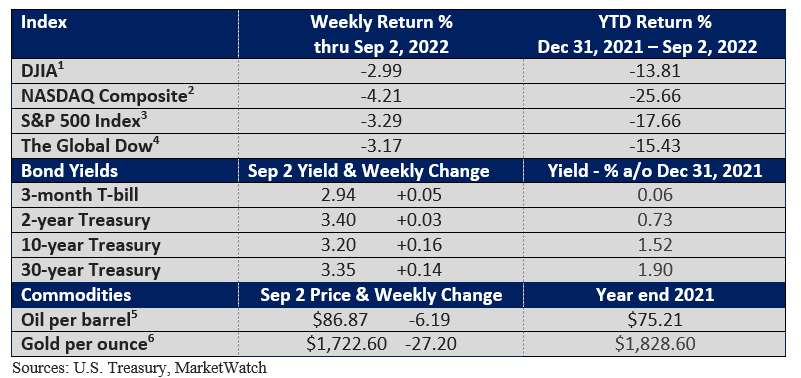A Steady Jobs Report
Short-term traders hold their breath before every jobs report, which is typically released the first Friday of each month. Job creation, or the lack of, is important. But the heavy emphasis on the monthly numbers seems a bit overdone.
When the economy is expanding, employment typically increases. When the economy is contracting, the number of employed usually declines. Currently, the number of job openings makes it easier to find work in some industries. It appears to be adding to the robust numbers.
In August, the U.S. Bureau of Labor Statistics (BLS) reported that nonfarm payrolls grew by a healthy 315,000, down from July’s 526,000. The unemployment rate ticked up to 3.7% in August from 3.5% in July.
The nonfarm payrolls number and the unemployment rate are taken from separate surveys, which occasionally creates temporary discrepancies. In August, the increase in the jobless rate occurred amid a big inflow of folks looking for work.
Overall, job growth moderated but remains healthy.
From the perspective of workers and investors, it was a good report. Plus, a slight moderation in wage growth added to the narrative that the rate of inflation may have peaked.
Even if inflation comes in lighter-than-expected when it’s reported next week, it may not be enough to keep the Federal Reserve from hiking the fed funds rate another 75 basis points (bp, 1 bp = 0.01%) at its September meeting.
Fed Chief Jerome Powell lowered the hammer during a late August speech. One or two months of good inflation data may not be enough for the Fed to shelve another 75 bp rate hike.
The Fed wants to reestablish its credibility, convince investors it’s serious about conquering inflation, and it wants to avoid the policy mistakes of the 1970s that eventually forced then-Fed Chair Paul Volcker to ratchet up interest rates to dizzying heights.
For most of the year, the Fed’s aggressive response to inflation has been the primary focus of investors.
If you have any questions or would like to discuss any other matters, please let me know.
Clark S. Bellin, CIMA®, CPWA®, CEPA
President & Financial Advisor, Bellwether Wealth
402-476-8844 cbellin@bellww.com
All items discussed in this report are for informational purposes only, are not advice of any kind, and are not intended as a solicitation to buy, hold, or sell any securities. Nothing contained herein constitutes tax, legal, insurance, or investment advice. Please consult the appropriate professional regarding your individual circumstance.
Stocks and bonds and commodities are not FDIC insured and can fall in value, and any investment information, securities and commodities mentioned in this report may not be suitable for everyone.
U.S. Treasury bonds and Treasury bills are guaranteed by the U.S. government and, if held to maturity, offer a fixed rate of return and guaranteed principal value. U.S. government bonds are issued and guaranteed as to the timely payment of principal and interest by the federal government. Treasury bills are certificates reflecting short-term (less than one year) obligations of the U.S. government.
Past performance is not a guarantee of future results.
Different investments involve different degrees of risk, and there can be no assurance that the future performance of any investment, security, commodity or investment strategy that is referenced will be profitable or be suitable for your portfolio.
The information has been obtained from sources considered to be reliable, but we do not guarantee that the foregoing material is accurate or complete. The information contained in this report does not purport to be a complete description of the securities, markets, or developments referred to in this material.
The information contained is not a complete summary or statement of all available data necessary for making an investment decision and does not constitute a recommendation.
Before making any investments or making any type of investment decision, please consult with your financial advisor and determine how a security may fit into your investment portfolio, how a decision may affect your financial position and how it may impact your financial goals.
All opinions are subject to change without notice in response to changing market and/or economic conditions.
1 The Dow Jones Industrial Average is an unmanaged index of 30 major companies which cannot be invested into directly. Past performance does not guarantee future results.
2 The NASDAQ Composite is an unmanaged index of companies which cannot be invested into directly. Past performance does not guarantee future results.
3 The S&P 500 Index is an unmanaged index of 500 larger companies which cannot be invested into directly. Past performance does not guarantee future results.
4 The Global Dow is an unmanaged index composed of stocks of 150 top companies. It cannot be invested into directly. Past performance does not guarantee future results.
5 CME Group front-month contract; Prices can and do vary; past performance does not guarantee future results.
6 CME Group continuous contract; Prices can and do vary; past performance does not guarantee future results.


